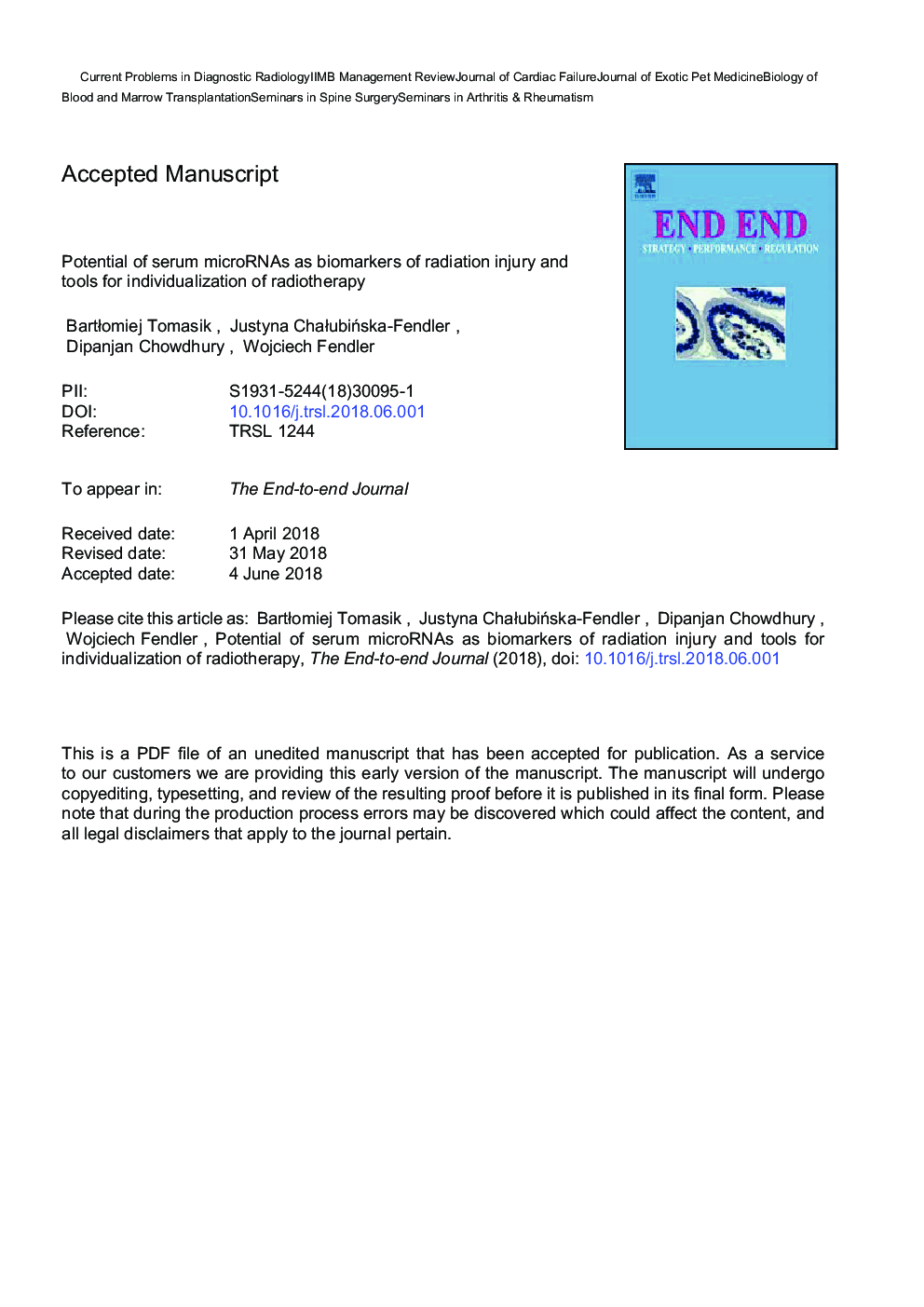| Article ID | Journal | Published Year | Pages | File Type |
|---|---|---|---|---|
| 11014012 | Translational Research | 2018 | 25 Pages |
Abstract
Due to tremendous technological advances, radiation oncologists are now capable of personalized treatment plans and deliver the dose in a highly precise manner. However, a crucial challenge is how to escalate radiation doses to cancer cells while reducing damage to surrounding healthy tissues. This determines the probability of achieving therapeutic success whilst safeguarding patients from complications. The current dose constraints rely on observational data. Therefore, incidental toxicity observed in a minority of patients limits the admissible dose thresholds for the whole population, theoretically narrowing down the curative potential of radiotherapy. Future tools for measurements of individual's radiosensitivity before and during treatment would allow proper treatment personalization. Variation in tissue tolerance is at least partially genetically-determined and recent progress in the field of molecular biology raises the possibility that novel assays will allow to predict the response to ionizing radiation. Recently, microRNAs have garnered interest as stable biomarkers of tumor radiation response and normal-tissue toxicity. Preclinical studies in mice and nonhuman primates have shown that serum circulating microRNAs can be used to accurately distinguish pre- and postirradiation states and predict the biological impact of high-dose irradiation. First reports from human studies are also encouraging, however biology-driven precision radiation oncology, which tailors treatment to individual patient's needs, still remains to be translated into clinical studies. In this review, we summarize current knowledge about the potential of serum microRNAs as biodosimeters and biomarkers for radiation injury to lung and hematopoietic cells.
Keywords
MIPLSFCTCAESOMAEORTCNtcpICRPRTOGHDLpri-miRNARNaseQUANTECMCPNPM1DSBDVHTRBPTGF-βPrimary miRNASmall interfering RNAROSsiRNANormal tissue complication probabilityribonucleic acidRNAinterleukinionizing radiationTransforming Growth Factor BetaLeast absolute shrinkage and selection operatorRISCDroshaDicerRadiotherapyribonucleasedouble strand breaksLate side effectshigh density lipoproteinRNA-Induced Silencing ComplexRadiation-induced lung toxicitygenome wide association studiesGWASMiRNADose-volume histogramRadiation pneumonitismonocyte chemoattractant protein 1macrophage inflammatory proteinArgonaute proteinsSingle nucleotide polymorphismpre-miRNASNPLASSOInternational Commission on Radiological ProtectionRadiation Therapy Oncology GroupReactive oxygen species
Related Topics
Health Sciences
Medicine and Dentistry
Medicine and Dentistry (General)
Authors
BartÅomiej Tomasik, Justyna ChaÅubiÅska-Fendler, Dipanjan Chowdhury, Wojciech Fendler,
